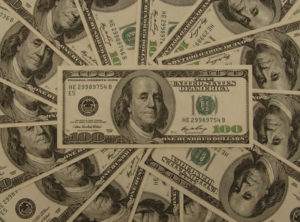The Denver Post recently reported on a U.S. Bureau of Labor Statistics (BLS) report that shows the 2015 median earnings of women in Colorado was 17.2 percent less than that of men. Other Colorado media such as the Colorado Springs Gazette and The Aspen Times picked up the Post’s story. Progressives and other left-wing statists like to make a big fuss over such numbers as proof of a “gender pay gap,” as if it were evidence of gender discrimination. They claim that it results from having a market-based economy. Furthermore, they claim that eliminating the gap requires massive government intervention in the economy.
But while the 17.2 percent may be a true statistic, it doesn’t actually represent a true pay gap due to gender.

Let me explain.
In a free society, people make different choices. And in a free economy, those choices are driven by price signals as well as by subjective values. The fact that men tend to take on more dangerous jobs than women, such as coal mining or oil drilling, explains some of the alleged pay gap. The fact that there are more fans willing to pay to see professional men’s basketball than there are fans willing to pay to see professional women’s basketball also explains some of the alleged pay gap. More women than men take time off from their careers for child rearing. That affects the pay gap.
Moreover, the 17.2 percent number comes from simply comparing the median earnings of all men and all women working full time. This is like comparing apples to oranges, as it doesn’t take into account the difference between various occupations and professions, levels of education and experience, or tenure on the job.
My point is that the studies showing a pay gap do not account for differences in individual choices about what profession to pursue, or how much to work.
The Post’s coverage of the BLS report hints that there might actually be more to the story than meets the eye, noting that “The data does not control for many factors, according to BLS.” That’s an understatement.
In fact, st![]() udies that account for those different choices show no gender pay gap at all. On an apples-to-apples basis, women librarians make the same pay as male librarians with the same job tenure. Female nurses make the same pay as male nurses with the same job tenure. Same for women vs. men teachers, women vs. men business managers, engineers, sales people, etc. You name the profession and, when all relevant variables are considered, there is no gender pay gap.
udies that account for those different choices show no gender pay gap at all. On an apples-to-apples basis, women librarians make the same pay as male librarians with the same job tenure. Female nurses make the same pay as male nurses with the same job tenure. Same for women vs. men teachers, women vs. men business managers, engineers, sales people, etc. You name the profession and, when all relevant variables are considered, there is no gender pay gap.
This is an astonishing finding and one that has even been published in liberal blogs such as the Huffington Post and others.
Noted feminist Christine Hoff Summers said that “American women are among the best informed and most self-determining human beings in the world. To say that they are manipulated into their life choices by forces beyond their control is divorced from reality and demeaning, to boot.” It shouldn’t take an economist to understand that if fewer women study feminist theory in college and more women study electrical engineering, they will have access to higher-paying jobs.
Consider the economic logic of it all. If it were true that women are paid less than men for equal work and equal quality of work, employers would hire more women than men, since they could make a higher profit by doing so. The market forces of supply and demand for labor would then bid up women’s pay and bid down men’s pay.
Or consider the classic story of Branch Rickey and Jackie Robinson when they bravely integrated Major League Baseball. Rickey saw more profitability by hiring the best people for the job, rather than keeping people out of jobs through discrimination. The powerful market force of profit incentives did more to eliminate the evil of racial discrimination, and did so more peacefully, than using the guns of government to try to achieve the same end.
The same has happened with regard to women and pay in the workplace, but that’s not quite as enticing a headline as the myth of the gender-based wage gap.
Paul Prentice Ph. D. is a senior fellow at the Independence Institute, a free market think tank in Denver, and a former economist at the U.S. Department of Agriculture under President Reagan.


